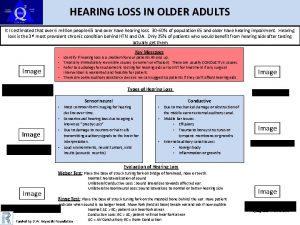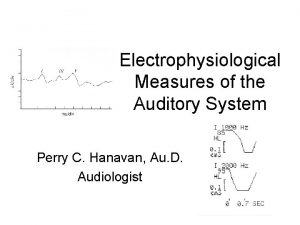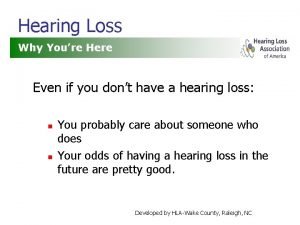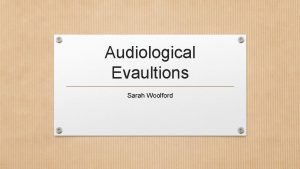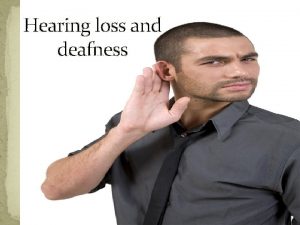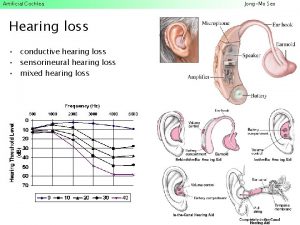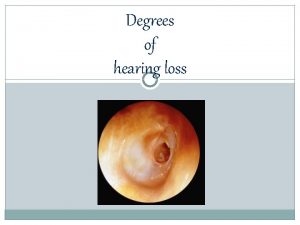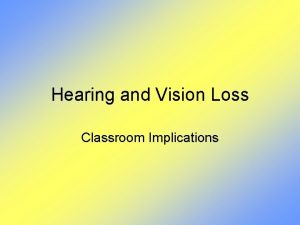Hearing Loss SARAH WOOLFORD What is a Hearing









- Slides: 9

Hearing Loss SARAH WOOLFORD

What is a Hearing Loss? A hearing loss is anything that is not within normal limits (WNL) which is between -10 – 15 d. B. A hearing loss can fall within three different categories and each category is reflective of air conduction and bone conduction differences. (All information from class discussion and Dr. Nagle’s Powerpoint)

Degree of Hearing Loss Hearing loss degrees is determined by degree of best air conduction to the degree of the worst air conduction threshold. For example, if a person can hear within the best within the slight range and the worst within the serve range, the person’s degree of hearing loss is slight to serve hearing loss. Hearing loss is recorded in each ear and is not always symmetrical. Generally, bone conduction is equal to or better than air conduction.


Types of Hearing Loss Type of hearing loss is determined by where the loss is occurring and then by the air conductivity. The three types consist of: 1. Conductive 2. Sensorineural 3. Mixed

Conductive Hearing Loss Conductive hearing loss is typically a problem within the outer or middle ear. This can be treatable and temporary, but if left unchecked, can become more serve with time. Example: Lego stuck in a child’s ear.

Sensorineural Hearing Loss Sensorineural hearing loss consists of a difference in the inner ear, specifically the cochlea or the auditory nerve, or even sometimes a component of the central auditory nervous system. This type of hearing loss is almost always permanent and is not always very treatable. Example: an older person with a hearing loss from years of loud noise exposure

Mixed Hearing Loss A mixed hearing loss is the combination of a conductive and sensorineural hearing loss together. The combination must occur in the same ear at the same time. Example: an older person with a hearing loss with a lego stuck in his or her ear.

Visual References 1. Slide 4: Image: (http: //www. health. state. mn. us/divs/cfh/topic/diseasesconds/content/images/hl 4. gif)



